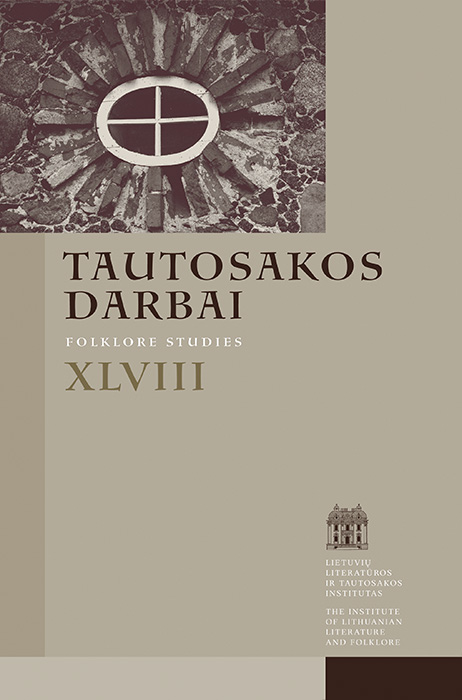Baladė apie baudžiamą dukterį: interpretavimo perspektyva
Santrauka
Pateikiamo tyrimo paskata – iki šiol problemiška baladės vieta lietuvių liaudies dainų masyve. Tiriant balades neišvengiamai tenka priimti tam tikras darbines ar metodologines prielaidas. Baladėse vertėtų išskirti joms (kaip ir dainoms) būdingą ritualinės simbolikos klodą (1) ir baladišką individualizuoto įvykio vaizdavimą (2). Konkretus straipsnio uždavinys – pasirinktos lietuvių baladės Augo ant dvaro liepelė interpretacija, lyginant ją su panašia baltarusių balade. Apžvelgiami archajiški baltarusių baladės motyvai. Pateikiama lietuviškosios baladės variantuose pasitaikančių motyvų ir vaizdinių analizė. Plati baladės Augo ant dvaro liepelė variantų skalė, jos sąsajos su baltarusių balade bei skirtingi čia įžiūrimi pagrindinio motyvo (skendimo / vestuvių su Dunojumi) atspindžiai, galiausiai – ryšys su merginos kaip aukojamos aukos idėja tyrimą kreipia į skirtingas interpretavimo perspektyvas.
Atsisiuntimai
Skaitomiausi šio autoriaus(ų) straipsniai
- Modesta Liugaitė-Černiauskienė, Žvilgsniai į lietuvių folklorinę baladę XX a. antroje pusėje , Tautosakos darbai: T 65 (2023): Tautosakos darbai
- Modesta Liugaitė-Černiauskienė, Jurga Sivickaitė-Sadauskienė, Pratarmė , Tautosakos darbai: T 65 (2023): Tautosakos darbai
- Modesta Liugaitė-Černiauskienė, Folklorinė baladė anapus žanrinio apibrėžtumo , Tautosakos darbai: T 63 (2022)
- Jurga Sadauskienė, Austė Nakienė, Rytis Ambrazevičius, Asta Skujytė-Razmienė, Radvilė Racėnaitė, Gražina Kadžytė, Modesta Liugaitė-Černiauskienė, Vita Džekčioriūtė-Medeišienė, Eligija Garšvienė, Kronika , Tautosakos darbai: T 54 (2017)
- Modesta Liugaitė-Černiauskienė, Jurga Sivickaitė-Sadauskienė, Foreword , Tautosakos darbai: T 65 (2023): Tautosakos darbai
- Modesta Liugaitė-Černiauskienė, Tremtinių, politinių kalinių dainavimas: liminalumo aspektas , Tautosakos darbai: T 61 (2021)
- Modesta Liugaitė-Černiauskienė, Pasaulio baladžių tyrėjų sambūris Vilniuje , Tautosakos darbai: T 57 (2019)
- Modesta Liugaitė-Černiauskienė, Baladės sakytinėje ir rašytinėje tradicijoje: tyrinėjimų retrospektyva , Tautosakos darbai: T 55 (2018)
- Modesta Liugaitė-Černiauskienė, Vandens prasmes baladėse apmąstant , Tautosakos darbai: T 50 (2015)
- Modesta Liugaitė-Černiauskienė, Jurgita Ūsaitytė, Pratarmė , Tautosakos darbai: T 69 (2025): Tautosakos darbai
